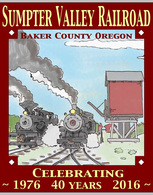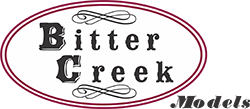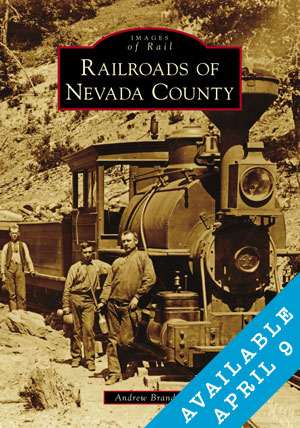

The H.K. Porter Company.
H.K. Porter & Co., Inc. became the largest manufacturer of small industrail locomotives in it's day with over 8000 locomotives built between 1866 and 1950. A Partnership was formed between Henry Kirke Porter and John Y. Smith to create a small machine shop in Pittsburgh, Pennsylvania in 1866 to both build and repair industrial equipment. This first company was called Smith & Porter and the timing was good as industrial railways in both Europe and the U.S. were converting to steam. Smith & Porter's first locomotive order came the following year on March 4, 1867 and quite rapidly Smith & Porter locomotives became specialized products intended for use by industrial oriented operators who needed small, four wheeled steam locomotives. In all at least 43 locomotives were constructed by the Smith & Porter shops (at least 100 built by 1871 according to Hilton).
In 1871 the Narrow Gauge movement came to America. Smith & Porter was both immediately and uniquely positioned to take advantage of this new market in railroad building. Disaster struck the company on February 7, 1871 when Smith & Porter faced a ruinous fire within the company's shops that destroyed twelve locomotives under construction as well as twenty-three adjacent structures. With damages estimated at $200,000 the business partnership was disolved. Smith left to form a new company called Smith & Dawson Locomotives (which later became the National Locomotive Works). Porter at this time formed a new partnership with Arthur W. Bell and the company became known as Porter, Bell & Co.
Porter, Bell & Co. immediately expanded the product range for the new Narrow Gauge market to include light passenger and freight. In all, Porter, Bell, & Co. would build 223 locomotives for use on common carrier roads. In May 1878 Arthur Bell passed with Henry Porter continuing the company on his own. This new incarnation of the company was now called H.K. Porter & Co with an established reputation as a builder of specialized and rugged small locomotives capable of being custom built quickly to meet the customer's needs. The product line also boasted extensive parts interchangeability which suited a multitude of options and configurations. Additionally, the most popular configurations were available literally as "off the shelf" power, in stock all the time, and ready for shipment. Additionally, common spare parts were in stock, ready to ship on a moment's notice reducing downtime for customer's equipment.
In 1890 Porter introduced the company's first compressed air locomotive for use in flammable environments and areas where flames, smoke, and high pressure steam were ill suited. While other companies were also building this type of motive power, within 10 years Porter captured 90% of the market. 1899 marked the incorporation of the company as H.K. Porter Co., Inc. plus a move and plant expansion in Pittsburg.
Porter in the 20th Century: Production reached it's all-time yearly peak of nearly 400 units built in 1906. With changing technologies and the advent of gasoline powered engines Porter built the company's first gas mechanical locomotive in 1911. Improvements in locomotive technology allowed Porter to build it's first "Fireless" locomotive in 1915 by using larger pressure vessles to store both steam and superheated water in usable quantities on board the locomotive. Again, Porter was rapidly able to dominate this small specialized market.
Post World War 1: A post war reconstruction boom begins in Europe and the new automobiles create a domestic roadway construction boom. Porter's become the small locomotive of choice for contractors on both sides of the Atlantic along with portable track and small rolling stock for earth moving projects.
April 10, 1921 Henry Porter passed away at age 81, still running the company. He had built the single dominant industrial locomotive firm which would last a few years more until trucks and forklifts were able to replace steam power. Then a long period of decine began as the automobile took over for railroads.
The H. K. Porter Co. declared bankruptcy in 1939 and was then purchased by Thomas Mellon Evans who at the time was adding manufacturers to his collection. Briefly during World War Two locomotive production rose for Porter. After the war, Porter primarily became a holding company for many of the subsidiary enterprised Evans had aquired. 1950 marked the last Porter locomotive built. The parts business and all the remaining patterns were sold to the Davenport Locomotive Works.
As a locomotive producer, the H. K. Porter Company became the third largest producer of Narrow Gauge road locomotives following only Baldwin and Brooks. Porter was second to none in regards to small steam power for industrial applications. Today, Porter remains a producer of industrial tools.
American Narrow Gauge Railroads. George W. Hilton. Stanford University Press 1990.
http://en.wikipedia.org/wiki/H._K._Porter,_Inc
H.K. Porter Classification of Locomotives.
From the 1900 Catalog.For sake of convenience in classifying our numerous designs of locomotives we have adopted a very simple system. The size of the locomotive is designated by the diameter and stroke of its cylinder in inches: thus, 9 x 14 means a locomotive with cylinders nine inches diameter by 14 inches stroke.
The number of driving wheels is expressed by:
A for two driving wheels.
B for four driving wheels.
C for six driving wheels.
D for eight driving wheels.
The number and position of locomotive truck wheels is expressed by a figure 2 for two-wheel, or 4 for four-wheel truck; for a rear truck, this figure is placed to the left, and for a front truck placed to the right, of the letter denoting the number of driving wheels, and separated by a hyphen. (The locomotive is supposed to be headed toward the observer's right hand.) Thus, 2-B denotes a locomotive with a two-wheel rear truck and four driving wheels; 4-C-2 a locomotive with a four-wheel rear truck, six driving wheels and a two-wheel front truck.
The arrangement of water tank is denoted by:
T for tender tank with eight wheels.
T4 for tender tank with four wheels.
T6 for tender tank with six wheels.
S for saddle tank.
SS for two side tanks alongside of boiler.
R for rear tank.
RR for two tanks, one each side at rear.
K denotes a locomotive with sheet steel open canopy for cab.
M denotes a motor style cab enclosing the machinery.
I denotes a locomotive with a steel cab.
O denotes a locomotive without cab.
P denotes a pneumatic or compressed air locomotive, with one air tank, and PP one with two air tanks."
Reference Material Available Online:
Catalogs.
Porter Catalog, 6th Edition. 1889. From Google Books.
Porter Locomotive Catalog, 6th Edition. 1889. From: Archive.Org
Porter Locomotive Catalog, 10th Edition. 1908. From: Archive.Org
Modern Compressed Air locomotive Catalog. 1914. From Google Books.
Photographs.
Porter locomotive photographs.
Images with the keyword "H. K. Porter" in our gallery.



